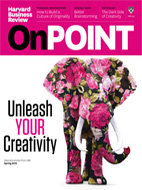
Популярные статьи
- Государственно-частное партнерство: теория и практика
- Международный форум по Партнерству Северного измерения в сфере культуры
- Мировой финансовый кризис и его влияние на Россию
- Совершенствование оценки эффективности инвестиций
- Теория экономических механизмов
- Кластерный подход в стратегии инновационного развития зарубежных стран
- Качество и уровень жизни населения
- Фактор времени при оценке эффективности инвестиционных проектов
- Государственная собственность в российской экономике - Масштаб и распределение по секторам
- Вопросы оценки видов социального эффекта при реализации инвестиционных проектов
- Особенности нового этапа инновационного развития России
- Перспективы социально-экономического развития России
- Экономический кризис в России: экспертный взгляд
- Налоговые риски
Популярные курсовые
- Учет нематериальных активов
- Потребительское кредитование
- Бухгалтерский учет - Курсовые работы
- Финансы, бухгалтерия, аудит - курсовые и дипломные работы
- Денежная система и денежный рынок
- Долгосрочное планирование на предприятии
- Диагностика кризисного состояния предприятия
- Интеграционные процессы в современном мире
- Доходы организации: их виды и классификация
- Кредитная система: место и роль в ней ЦБ и коммерческих банков
- Международные рынки капиталов
- Многофакторный анализ производительности труда
- Непрерывный трудовой стаж
- Виды и формы собственности и трансформация отношений собственности в России
- Анализ финансово-хозяйственной деятельности
Навигация по сайту
Harvard Business Review 2019 (Spring) |
| Скачать - Журналы | |||
|
Год выпуска: Spring 2019 Автор: Harvard Business Review USA Жанр: Бизнес Издательство: «Harvard Business Review USA» Формат: PDF (журнал на английском языке) Количество страниц: 112 Описание: Sparking Breakthrough IdeasCreativity shouldn't be confined to just the "creative types" in your organization. As technologies and strategies change and customers' demands evolve, companies increasingly expect everyone at every level to contribute ideas. So how can you spark new thinking about products, processes, and problems? Simple logistical changes in the way you schedule your day or where you sit can be a good place to start. Research by Carnegie Mellon's Sunkee Lee shows that sitting next to unfamiliar colleagues can make you more likely to come up with an innovative solution to a problem: Your new neighbors expose you to new knowledge, which allows you to connect ideas in novel ways ("Why You Should Rotate Office Seating Assignments"). Сontents Harvard Business ReviewBE MORE CREATIVE
ARRANGE A TIME AND PLACE
IMPROVE YOUR TEAM'S BRAINSTORMING
BUILD BETTER PRODUCTS
MAKE YOUR ORGANIZATION MORE CREATIVE
скачать журнал: Harvard Business Review 2019 (Spring)
|
Новые книги и журналы
Популярные книги и учебники
- Экономикс - Макконнелл К.Р., Брю С.Л. - Учебник
- Бухгалтерский учет - Кондраков Н.П. - Учебник
- Капитал - Карл Маркс
- Курс микроэкономики - Нуреев Р. М. - Учебник
- Макроэкономика - Агапова Т.А. - Учебник
- Экономика предприятия - Горфинкель В.Я. - Учебник
- Финансовый менеджмент: теория и практика - Ковалев В.В. - Учебник
- Комплексный экономический анализ хозяйственной деятельности - Алексеева А.И. - Учебник
- Теория анализа хозяйственной деятельности - Савицкая Г.В. - Учебник
- Деньги, кредит, банки - Лаврушин О.И. - Экспресс-курс
Популярные рефераты
- Коллективизация в СССР: причины, методы проведения, итоги
- Макроэкономическая политика: основные модели
- Краткосрочная финансовая политика предприятия
- История развития кредитной системы в России
- Марксизм как научная теория. Условия возникновения марксизма. К. Маркс о судьбах капитализма
- Коммерческие банки и их функции
- Лизинг
- Малые предприятия
- Классификация счетов по экономическому содержанию
- Кризис отечественной экономики
- История развития банковской системы в России
- Маржинализм и теория предельной полезности
- Иностранные инвестиции
- Безработица в России
- Кризис финансовой системы стран Азии и его влияние на Россию
- Источники формирования оборотных средств в условиях рынка
Популярные лекции
- Шпаргалки по бухгалтерскому учету
- Шпаргалки по экономике предприятия
- Аудиолекции по экономике
- Шпаргалки по финансовому менеджменту
- Шпаргалки по мировой экономике
- Шпаргалки по аудиту
- Микроэкономика - Лекции - Тигова Т. Н.
- Шпаргалки: Финансы. Деньги. Кредит
- Шпаргалки по финансам
- Шпаргалки по анализу финансовой отчетности
- Шпаргалки по финансам и кредиту
- Шпаргалки по ценообразованию


